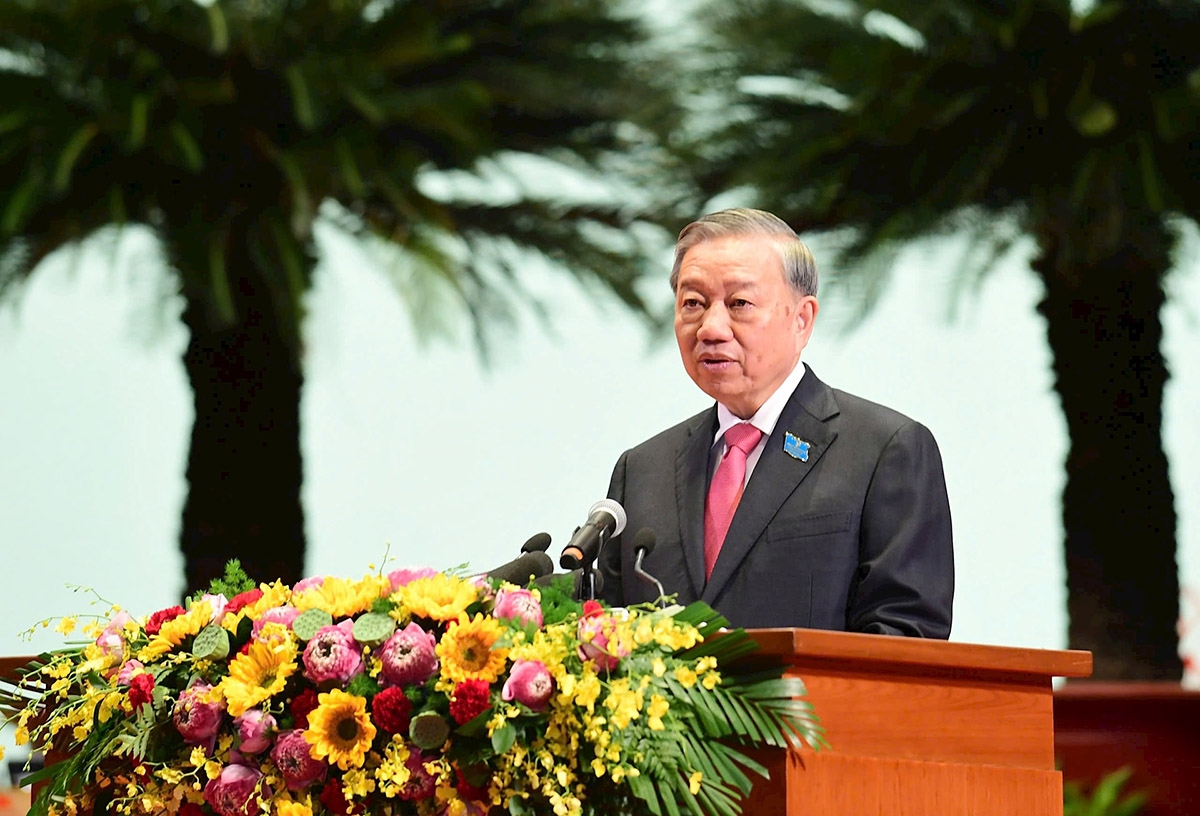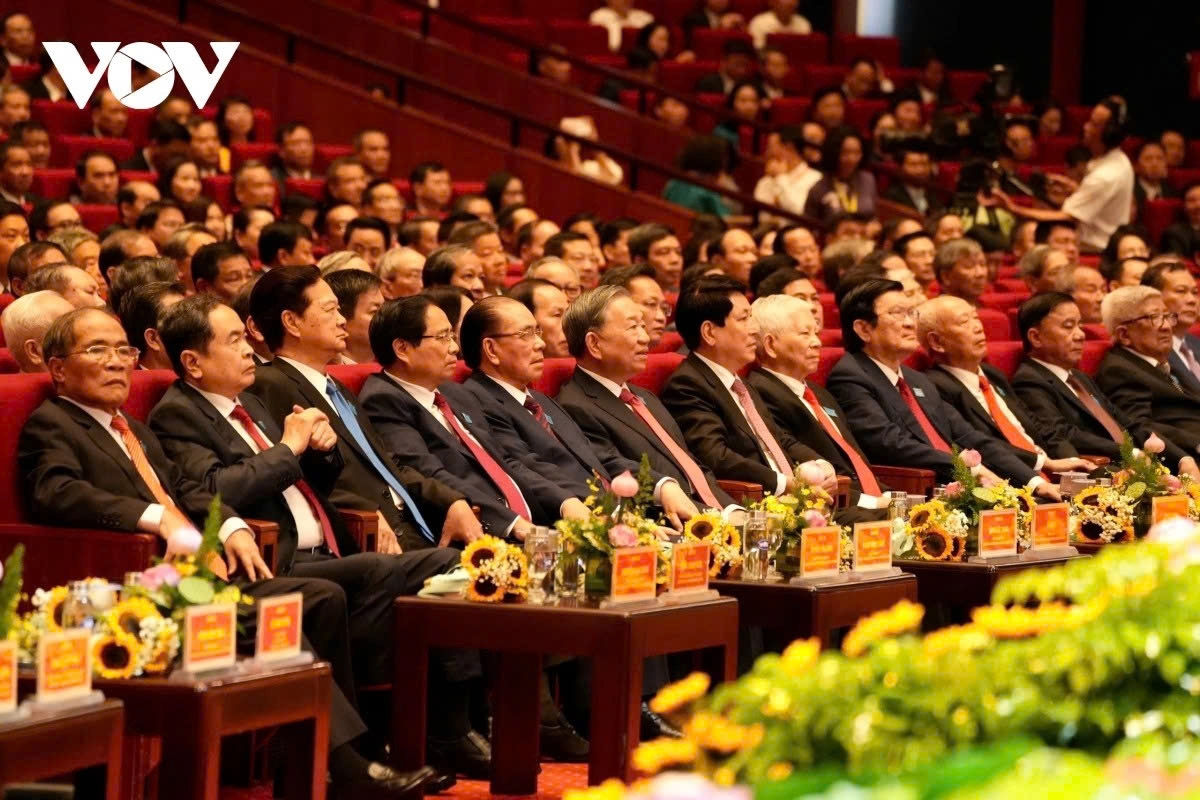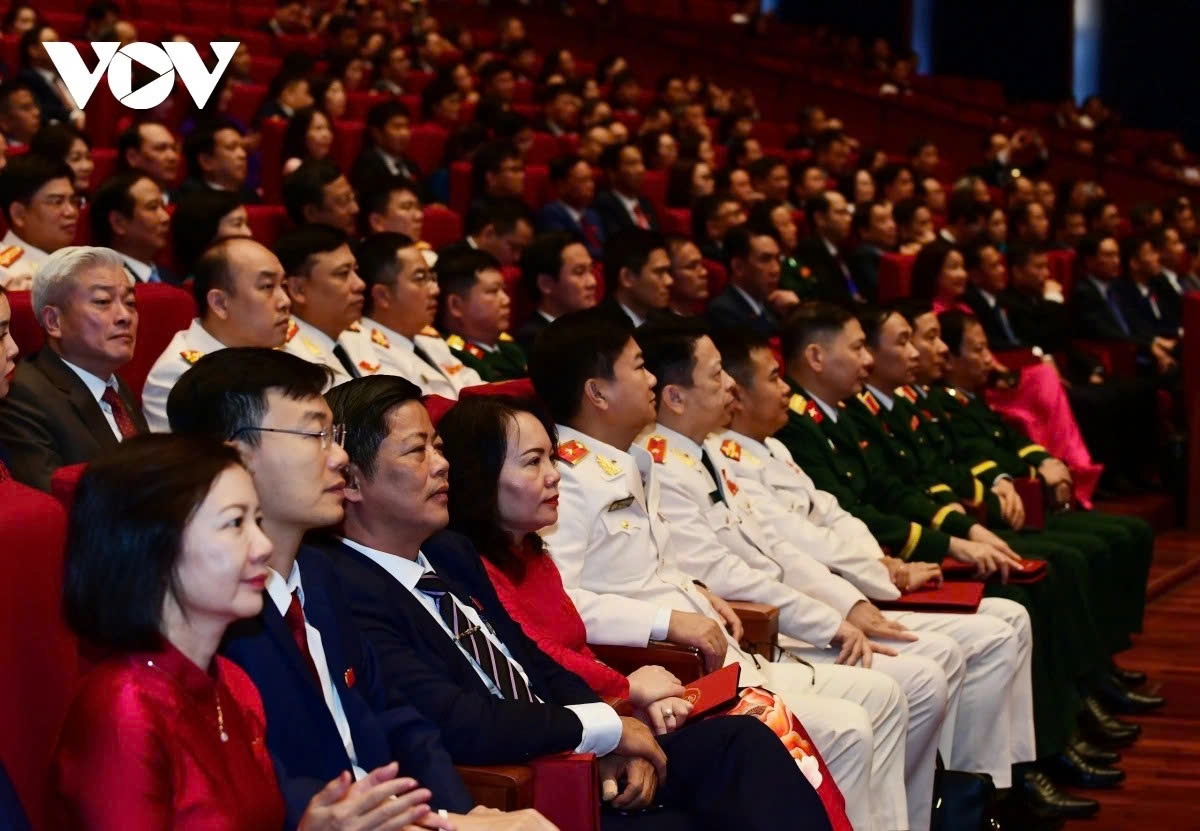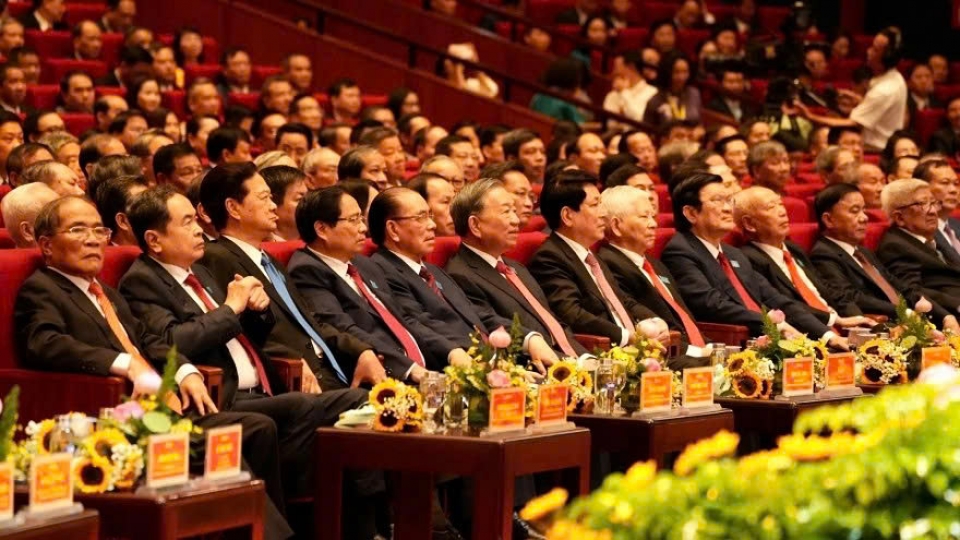Party leader To Lam calls for bold thinking to shape Hanoi’s future
VOV.VN - Hanoi must adopt a new mindset and a broader strategic vision, and take bold, decisive action to live up to its position as the thousand-year-old capital, the political and administrative heart of the nation, and become a true driving force for regional and national development in the new era.

Party General Secretary To Lam was speaking at the 18th Congress of the Hanoi Party Committee on October 16 that was attended by 550 delegates representing nearly 500,000 Party members from 136 Party organisations in the capital city.
He called on the city’s leadership to transition from a passive management mindset to a proactive, service-oriented, and creative governance model, by implementing clear decentralisation, with defined responsibilities, accountability, and transparency across all levels of the administration.
He stressed that the local leadership must act on their words, by working quickly and efficiently, finishing what they start, and always putting the people’s needs first.
The first major breakthrough for the city, according to the General Secretary, is to build a clean, strong, exemplary Party organisation and political system. The Hanoi Party Committee must become a model for the entire country, demonstrating superior leadership capacity, political integrity, and ethical conduct.
Each Party member and official must "dare to think, dare to do, and dare to take responsibility" for the common good, speaking in alignment with action and always serving the people. At the same time, the Party Committee must firmly uphold anti-corruption, anti-waste, and anti-negativity efforts, linked with the continued study and practice of President Ho Chi Minh’s ideology, ethics, and style.
The Party leader stressed that Hanoi can no longer grow under a mono-centric, overly centralised model, particularly as the historic inner-city core is already under immense strain. Instead, he proposed that the city be restructured into a multi-polar, multi-centered model, with each zone playing a distinct role within an integrated whole.

Key development zones, he suggested, include the central core (the political, cultural, and heritage conservation hub); the Northwest pole (a centre for high-tech industry, education, and scientific research); the South pole (home to modern industrial parks focusing on logistics, supporting industries, and manufacturing); and the East pole (a commercial and service gateway built around port infrastructure).
Each pole, he said, will function as a dynamic satellite, with both autonomy and connectivity, helping transform Hanoi into a regional and national innovation and connectivity hub.
The General Secretary emphasised that Culture – Identity – Innovation must be placed at the core of all development strategies. These values are not only cultural foundations but also serve as strategic pillars to build a modern, civilised, and globally significant capital.
To realise this vision, he proposed the formation of three key innovation zones. The first is a heritage-based zone, built around the historical inner city, the banks of the Red River, and the ancient Co Loa citadel, preserving and promoting Hanoi’s rich cultural legacy. The second is a knowledge-based zone, centred on Vietnam National University and other leading institutions of training and research, positioning Hanoi as a hub of education and intellectual development. The third is a technology-based zone, focused on the Hoa Lac Hi-Tech Park and associated innovation clusters, aiming to drive scientific advancement and high-tech industries.

In his speech, the top leader also set out a clear vision for Hanoi to become a leading centre of innovation, science, and technology in Vietnam, working alongside Ho Chi Minh City to lead national and regional growth.
Hanoi must evolve into a hub for policy experimentation, cutting-edge technology, talent development, and new national ideas, he said, adding this isn’t just an economic or social necessity but a strategic choice of national stature, signaling a shift in the country’s growth model toward knowledge, technology, talent, and creativity.
The General Secretary reminded that Hanoi must remain a bastion of political stability, public security, and social order. He called for early detection and effective prevention of crimes, especially organised crime and high-tech cybercrime, and strengthening disaster response and climate resilience.
The true measure of Hanoi’s peace and stability, he said, is the everyday sense of safety felt by its citizens and visitors.
Finally, the leader urged Hanoi to enhance international cooperation, expand global partnerships with other major cities, and play an active role in networks of green – smart – creative cities. Through this, Hanoi can raise its profile as a leading political, cultural, educational, and economic centre of Vietnam on the world stage.





